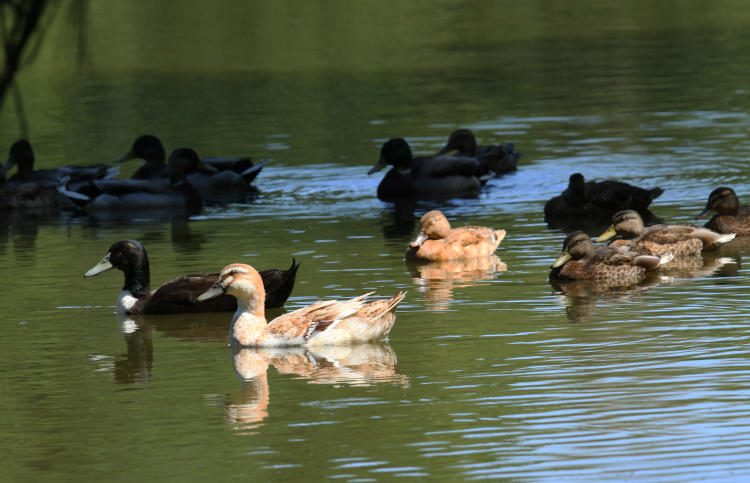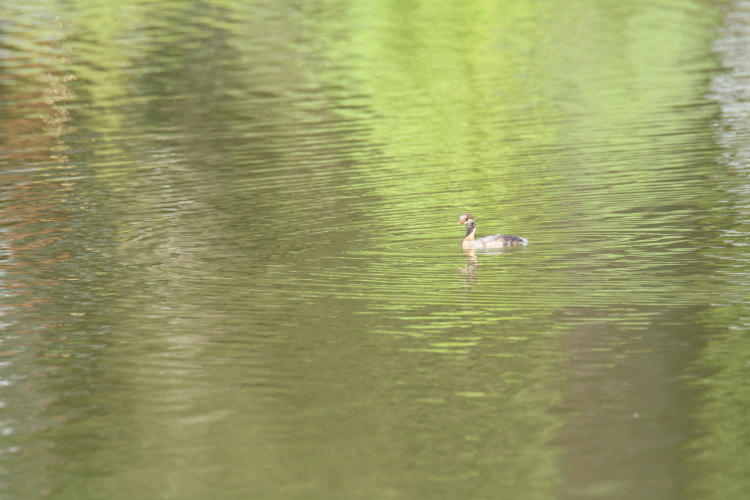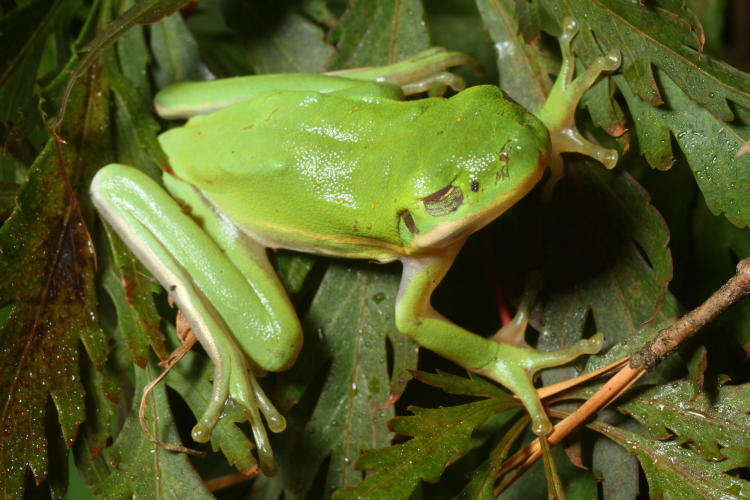Well, okay, two days ago. I could have posted these sooner but my hands were trapped under my ass and I couldn’t type. Anyway, I did a brief circuit of the neighborhood pond just to see what was happening, which wasn’t much. A great blue heron and a great egret both remained quite distant, spooky, and elusive of decent photos, probably jealous of my eagle exploits in New York. Most other critters remained unseen, and I’ll leave you to speculate upon whether this was due to simply not being around, or my inability to spot something right under my nose. But there were ducks.

A few families of mallards (Anas platyrhynchos) were hanging about, including the buff female that I’d been flipped off by earlier in the year but then disappeared – she was back with her beau and brood, it would appear, including an offspring that seems to have kept her coloration to some degree. Her mate, if I’m interpreting the one immediately to the left correctly but I’m assuming nothing and really it’s all okay with me no matter what, appears to be a domesticated mallard, or formerly anyway – that color pattern doesn’t tend to occur in the wild. Man, these waterfowl just blurrin’ all the lines.
Much further out swam a solitary figure, which from profile I suspected, the long lens almost confirmed, and later examination of the photos at higher res helped pin down. First, the full frame, at 600mm so you know it was a ways off.

I’ve seen a single specimen at about the same distance several times over now, and never got a decent shot (mostly due to lower light levels.) This time still wasn’t ideal but at least I got enough detail to confirm identification. For that, we go in closer.

From the coloration around the head and neck, and the muted markings on the bill, this is a juvenile pie-billed grebe (Podilymbus podiceps) – about half the size of the mallards, if not a little smaller, and quite shy. Since it’s this year’s brood, it is almost certainly not the same one that I’ve seen before, which makes me wonder where the folks might be, but it’s old enough to be out on its own anyway. I have a goal now to get much better pics.
Back at Walkabout Estates, later on in the evening, I snagged a couple more shots just for the sake of it.

One of the many juvenile green treefrogs (Hyla cinerea) that hang around had climbed a porch column, then leapt across to the wind chimes – luckily, the air was still that night or the frog might have gotten a rude wakeup call. Despite it being well after sundown, the pupils are closed so much because the porch light was on to attract bugs, because I presently have a treefrog without eyes housed in a terrarium on the porch.

Now, how it came to be without eyes, I can’t say. The scarring you see on its nose may be a related factor, though I did not see any obvious damage around the eyes themselves, much less damaged orbs; one is completely missing, the other might have something minimal under the eyelids, or might not. A day or so after first spotting this one, I found another of the same age dead in one of the potted plants, one eye ulcerated, so one of the possibilities is a communicable illness, which is why I collected the blind one when I next saw it (many meters away from the first sighting, it must be said,) and isolated it. I also wanted to see if it could feed without sight, and so, the terrarium remains stocked with plenty of insects. The curious bit is, the scarring is largely healed, so if an altercation took the frog’s sight, it seems to be plugging away, and the same could be said if it had been born this way. Waiting to see what happens, really – not holding my breath, but, well…
Meanwhile, close by to the spot where I’d retrieved the blind one, I found something more promising.

This one was slightly surprising, because it’s a Carolina mantis (Stagmomantis carolina) and appears to be pregnant, but certainly a breeding adult. The Chinese mantids have just hit this stage and I’ve been watching for such activity, but the Carolinas hatch much later, and I’ve still been spotting very small specimens here and there, so finding one that looks ready to drop an egg case changed my expectations a little. I observed this one for a short while, without any distinct activity, but I had to do it by headlamp and the movement and changing shadows (because I can’t hold that still,) may well have prevented it from any activity anyway. I didn’t find it again on subsequent checks, nor did I find an egg sac, but this is the same cleyera shrub that hid a Chinese mantis egg sac from me all winter, and those are several times more obvious. Plus see above about my abilities. I remain alert for the opportunities, still intent on getting shots of mating and/or egg-laying, but so far that’s been elusive so, we’ll see…



















































